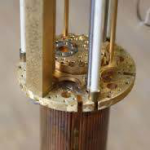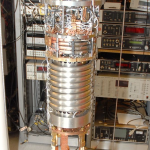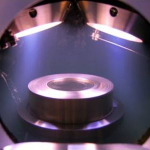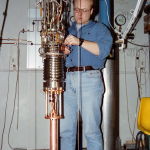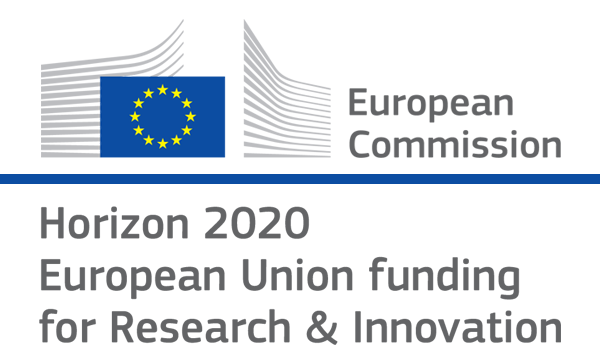

- Photon Transport in a Bose-Hubbard Chain of Superconducting Artificial Atoms
G. P. Fedorov et al., Phys. Rev. Lett. 126, 180503 (2021) - Path-Dependent Supercooling of the
He3 Superfluid A-B Transition
Dmytro Lotnyk et al., Phys. Rev. Lett. 126, 215301 (2021) - Superconductivity in an extreme strange metal
D. H. Nguyen et al., Nat Commun 12, 4341 (2021) - High-Q Silicon Nitride Drum Resonators Strongly Coupled to Gates
Xin Zhou et al., Nano Lett. 21, 5738-5744 (2021) - Measurement of the 229Th isomer energy with a magnetic micro-calorimeter
T. Sikorsky et al., Phys. Rev. Lett. 125 (2020) 142503
Magnon Bose–Einstein condensation and spin superfluidity
Yu.M. Bunkov, G.E. VolovikBose–Einstein condensation (BEC) is a quantum phenomenon of formation of a collective quantum state in which a macroscopic number of particles occupy the lowest energy state and thus is governed by a single wavefunction. Here we highlight the BEC in a magnetic subsystem—the BEC of magnons, elementary magnetic excitations. The magnon BEC is manifested as the spontaneously emerging state of the precessing spins, in which all spins precess with the same frequency and phase even in an inhomogeneous magnetic field. The coherent spin precession was observed first in superfluid 3He-B and this domain was called the homogeneously precessing domain (HPD). The main feature of the HPD is the induction decay signal, which ranges over many orders of magnitude longer than is prescribed by the inhomogeneity of magnetic field. This means that spins precess not with a local Larmor frequency, but coherently with a common frequency and phase. This BEC can also be created and stabilized by continuous NMR pumping. In this case the NMR frequency plays the role of a magnon chemical potential, which determines the density of the magnon condensate. The interference between two condensates has also been demonstrated. It was shown that HPD exhibits all the properties of spin superfluidity. The main property is the existence of a spin supercurrent. This spin supercurrent flows separately from the mass current. Transfer of magnetization by the spin supercurrent by a distance of more than 1 cm has been observed. Also related phenomena have been observed: the spin current Josephson effect; the phase-slip processes at the critical current; and the spin current vortex—a topological defect which is the analog of a quantized vortex in superfluids and of an Abrikosov vortex in superconductors; and so on. It is important to mention that the spin supercurrent is a magnetic phenomenon, which is not directly related to the mass superfluidity of 3He: it is the consequence of a specific antiferromagnetic ordering in superfluid 3He. Several different states of coherent precession have been observed in 3He-B: the homogeneously precessing domain (HPD); a persistent signal formed by Q-balls at very low temperatures; coherent precession with fractional magnetization; and two new modes of coherent precession in compressed aerogel. In compressed aerogel the coherent precession has been also found in 3He-A. We demonstrate that the coherent precession of magnetization is a true BEC of magnons, with the magnon interaction term in the Gross–Pitaevskii equation being provided by spin–orbit coupling which is different for different states of the magnon BEC.
J. Phys.: Condens. Matter 22 ,164210 (2010)
doi: 10.1088/0953-8984/22/16/164210

